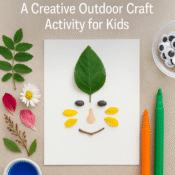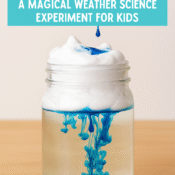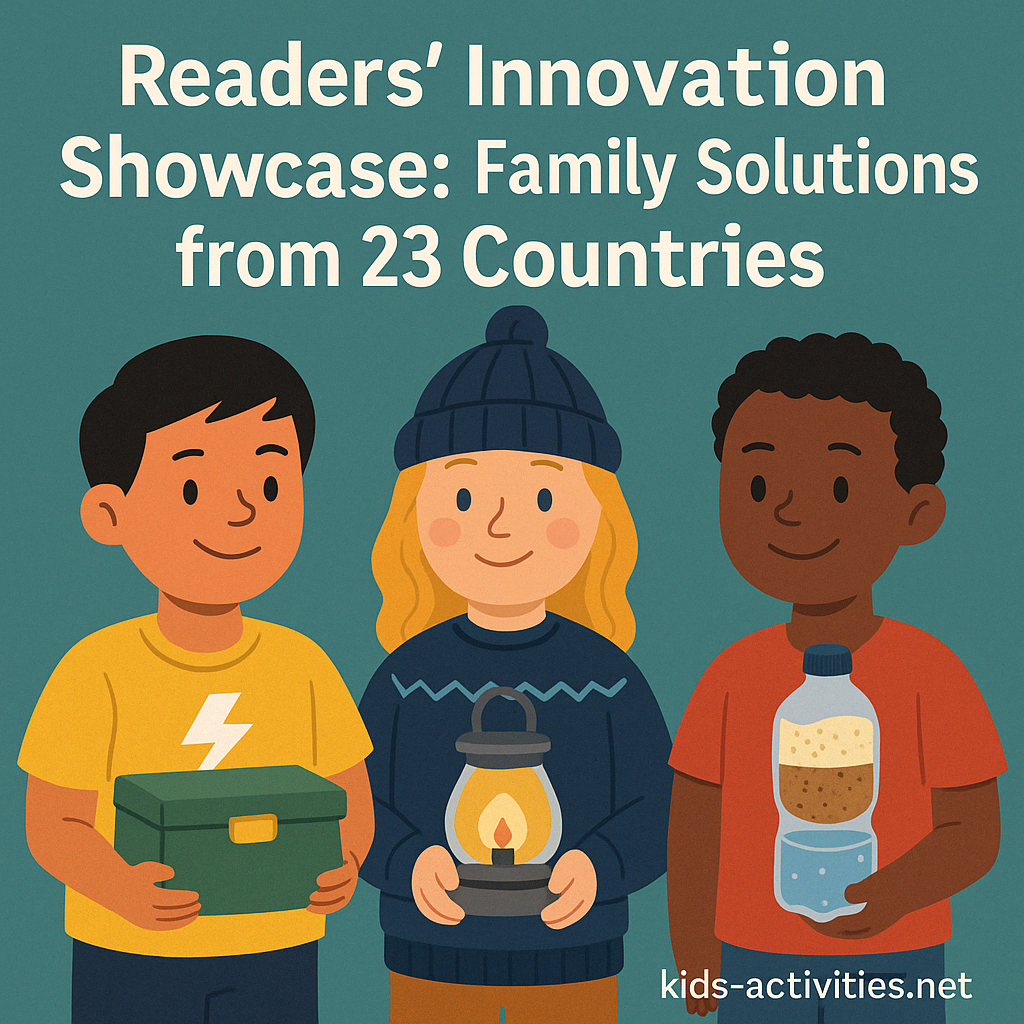
Reader Innovation Fair: Creative Family Solutions from 23 Countries
When Parents Become Inventors
Parents around the world face similar problems—keeping kids safe, engaged, and learning—even in wildly different environments. What’s inspiring is how families, often with few resources, engineer creative, hands-on solutions that work.
In this special edition of Global Parent Picks, we spotlight three ingenious family inventions from the Philippines, Norway, and Kenya. Each project turns adversity into innovation through child-safe design, cultural relevance, and DIY brilliance. These aren’t just clever life hacks—they’re real-world engineering marvels born from everyday challenges.
Local Wisdom, Global Relevance
It’s easy to think that innovation comes from labs or tech hubs. But many of the best ideas come from kitchen tables and backyard workshops—especially when they’re born from necessity. In many regions, formal resources may be limited, but creativity is abundant.
By learning from parent-driven design, children and families everywhere develop:
- Respect for cultural diversity and context
- Problem-solving skills using everyday materials
- Empathy and a global mindset
- A DIY approach to challenges at home and in the community
These projects aren’t just clever—they’re deeply practical, beautifully local, and easily replicable. They also offer great discussion starters about global equity, access to materials, and resilience.
Project 1: Typhoon-Ready Toy Box (Philippines)
Challenge: Protect children’s belongings and provide emotional comfort during seasonal typhoons that frequently impact Filipino communities.
Family Innovation: A waterproof, floatable toy chest made from repurposed plastic drums, featuring built-in games, a solar nightlight, and emergency whistle.
Cultural Insight: In many coastal areas of the Philippines, typhoons disrupt routines and displace families multiple times a year. For children, this means losing access to comfort objects or toys that help regulate emotion. This invention keeps emotional well-being at the centre.
Make It Yourself:
Materials:
- Plastic storage drum with lid
- Pool noodles or EVA foam strips
- Solar garden light
- Glow-in-the-dark stickers
- Dry-erase board & markers
- Rope handle and child whistle
- Weather-resistant paint
Steps:
- Cut and pad the inner rim with pool noodles to provide floatation.
- Mount a small solar light and stick glow-in-the-dark shapes inside the lid.
- Secure a rope handle and tie an emergency whistle to the outside.
- Decorate with durable paints and waterproof stickers.
- Add toys, comfort objects, games, and even soft snacks.
Test It: Hose it down to check for leaks or submerge partially in a tub. Does it stay sealed? Does it float?
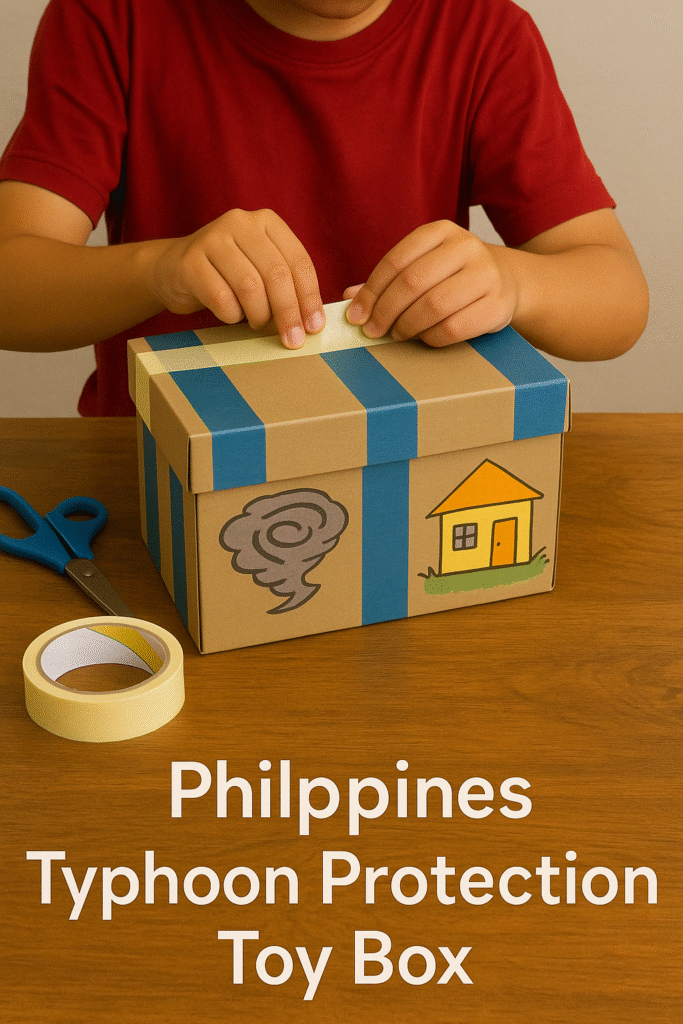
What It Teaches:
- Preparedness for natural disasters
- Designing for emotional safety
- Reuse of waste materials with purpose
Family Reflection Questions:
- What item would you pack first in your emergency toy chest?
- How does it feel to plan for something stressful in a creative way?
Project 2: Polar Night Light Play Station (Norway)
Challenge: Support young children’s emotional regulation and activity levels during the long, dark winter months of the Arctic Circle.
Family Innovation: A modular play mat with LED-lit colour zones and motion-activated games that simulate movement and light, inspired by the Northern Lights.
Cultural Insight: In Norway and other polar regions, children can go weeks without seeing sunlight. Light-based play can help prevent seasonal mood issues and support motor activity when outdoor time is limited.
Make It Yourself:
Materials:
- Interlocking foam floor tiles or yoga mat
- LED strip lights or fairy lights
- Motion sensors, push buttons or basic switches
- Felt shapes and coloured paper
- Small speaker or programmable sound chip (optional)
Steps:
- Cut felt into shapes (stars, animals, arrows) and glue or tape them onto a floor mat.
- Arrange LED lights around the border and connect them to sensors or switches.
- Program each section to light up with movement or sound. If no sensors are available, use colour-coded challenge cards instead.
- Encourage different movement patterns: step, hop, jump, spin.
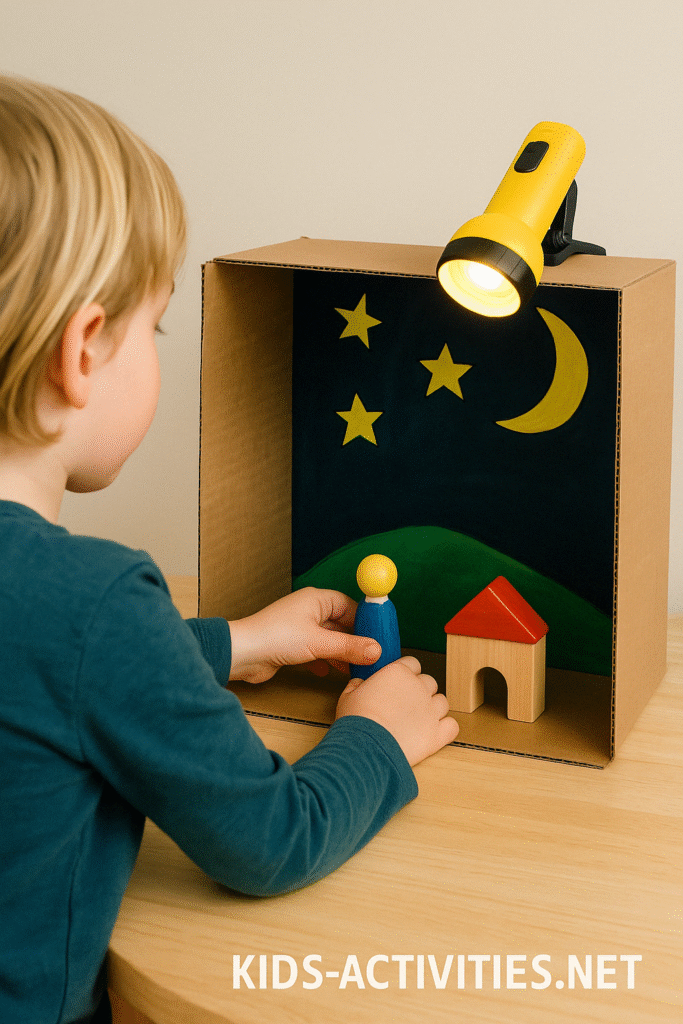
What It Teaches:
- Sensory regulation and spatial awareness
- Light therapy principles
- Play as a response to seasonal challenges
Family Reflection Questions:
- What colours feel most energising to you?
- How does light affect your mood at different times of year?
Project 3: Sand Filter Water Cleaner (Kenya)
Challenge: Teach children how to clean water effectively in sandy, rural environments where running water is limited or unsafe.
Family Innovation: A transparent bottle-based sand filtration tower using layers of cloth, charcoal, sand, and gravel—with illustrated guides kids can follow.
Cultural Insight: In many Kenyan communities, children help collect water from rivers or wells. Understanding how to filter water not only protects health, but also encourages self-reliance and science-based thinking.
Make It Yourself:
Materials:
- 2 clear plastic bottles (cut in half)
- Cheesecloth or fine cotton fabric
- Activated charcoal or firewood charcoal crushed finely
- Sand and clean gravel (rinsed)
- Funnel and container for filtered water
- Permanent markers and card to illustrate the water journey
Steps:
- Invert the top half of a bottle into the bottom half to create a funnel.
- Layer cloth, then charcoal, then sand, then gravel (in that order).
- Insert into the other half of the bottle or another container.
- Pour dirty water and watch it filter down.
- Illustrate each layer and result using simple sketches.
Test It: Try filtering water with and without charcoal. What’s the difference?
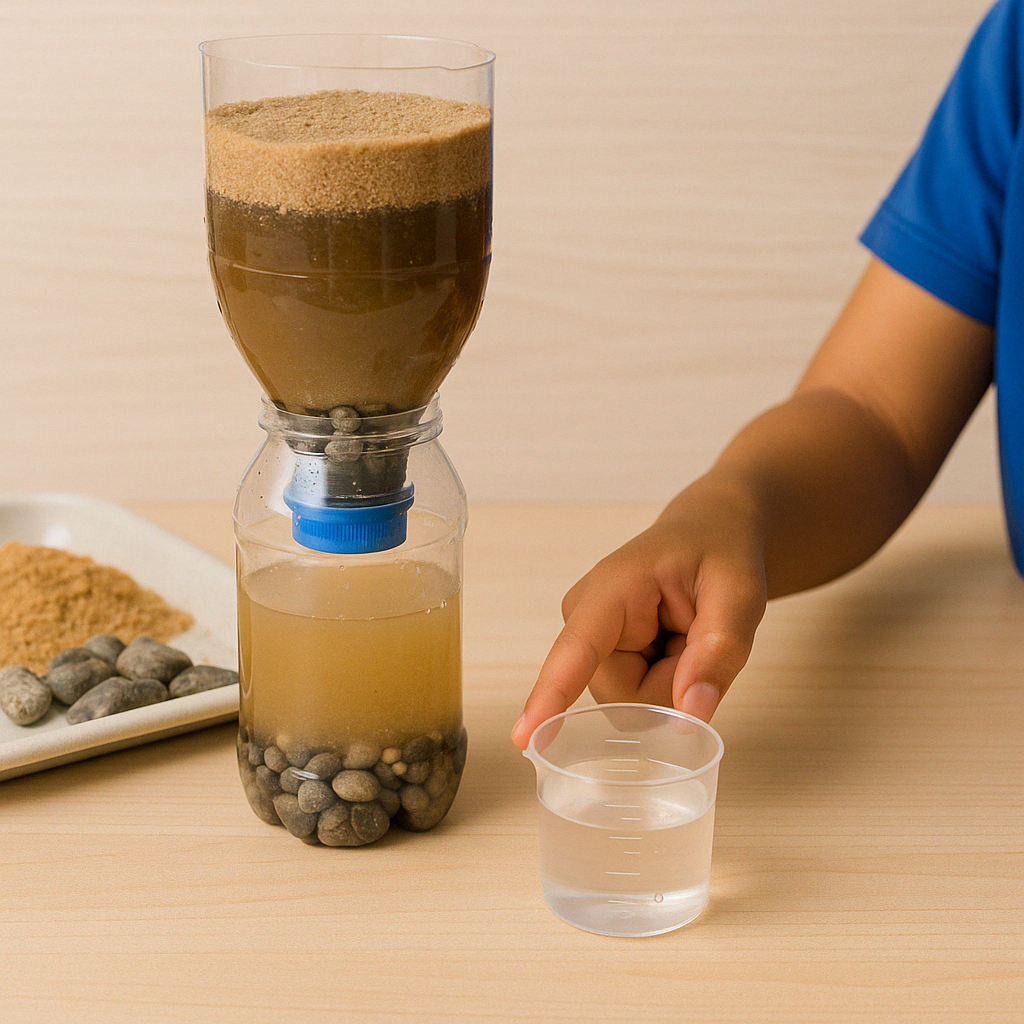
What It Teaches:
- Filtration principles
- Resourcefulness in clean water access
- Visual learning and science communication
Family Reflection Questions:
- What does clean water mean to your family?
- How would you adapt this if you had no plastic bottles?
Quick Swaps
Don’t have access to all materials? Try these simplified experiments:
- Mini Filter Lab: Use kitchen materials like paper towels, cotton balls, and coffee filters to compare clarity of filtered water.
- Cup Light Wall: Poke holes in disposable cups and place over fairy lights to create colour-shadow effects.
- Emergency Grab Bag Game: In 2 minutes, grab 5 essential items you’d pack for a storm or power outage. Compare answers in a group!
Extend the Learning
To dive deeper into design-for-need:
- Interview grandparents or neighbours about DIY solutions they’ve used at home
- Create a home or classroom “Fix-It Wall” with sketches of tools and inventions
- Organise a Family Hackathon where each group builds one solution to a household problem
Recommended Reads:
- Design Like Nature by Megan Clendenan
- Every Human Has a Home by World Vision
- What Do You Do With a Problem? by Kobi Yamada (picture book for mindset building)
Watch & Explore:
- “Eco-Innovations from the Global South” (YouTube mini-docs)
- Google Earth: Houses Around the World tour
Parents as Everyday Engineers
Whether it’s a toy box that floats during a flood or a glowing game mat to beat the winter blues, these family inventions show that innovation isn’t about money—it’s about resourcefulness, love, and necessity.
Invite your kids to start seeing problems as opportunities to build. Ask: “What could we improve in our home or community using what we already have?”
💡 Ready to build your own invention?
Share your creation with us and visit kids-activities.net for more parent-powered ideas from across the world.


